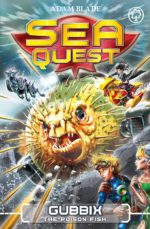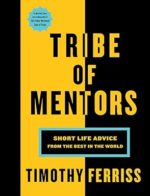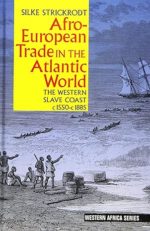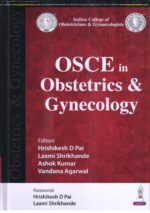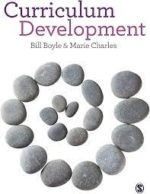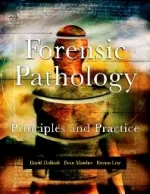-
Sea Quest: Gubbix the Poison Fish
KShs 695.00Max and Lia are trying to escape the Lost Lagoon…but Cora Blackheart has saved the most terrifying Robobeast for last. How will they evade the poisoned spines of Gubbix the blowfish?
The last thrilling book in Sea Quest Series 4: The Lost Lagoon. Don’t miss the rest of the series:
Rekkar the Screeching Orca, Tragg the Ice Bear and Horvos the Horror Bird! -
Tribe Of Mentors: Short Life Advice from the Best in the World
KShs 1,695.00Among other things, you will learn:
More than 50 morning routines — both for the early riser and those who struggle to get out of bed.
How TED curator Chris Anderson realized that the best way to get things done is to let go.
The best purchases of $100 or less (you’ll never have to think about the right gift again).
How to overcome failure and bounce back towards success.
Why Humans of New York creator Brandon Stanton believes that the best art will always be the riskiest.
How to meditate and be more mindful (and not just for those that find it easy).
Why tennis champion Maria Sharapova believe that “losing makes you think in ways victories can’t.”
How to truly achieve work-life balance (and why what most people tell you it isn’t realistic).
How billionaire Facebook co-founder Dustin Moskovitz transformed the way he engages with difficult situations to reduce suffering.
Ways to thrive (and survive) the overwhelming amount of information you process every day.
How to achieve clarity on your purpose and assess your priorities. -
Peppa & Friends Gerald Giraffe
KShs 495.00Peppa loves playing with her friend Gerald Giraffe. They like reading stories together.
-
Afro-European Trade in the Atlantic World The Western Slave Coast, c. 1550- c. 1885
KShs 14,560.00From 1550 to colonial partition in the mid-1880s, trade was key to Afro-European relations on the western Slave Coast (the coastal areas of modern Togo and parts of what are now Ghana and Benin). This book looks at the commercialrelations of two states which played a crucial role in the Atlantic slave trade as well as the trade in ivory and agricultural produce: Hula, known to European traders as Grand Popo (now in Benin) and Ge, known as Little Popo (nowin Togo). Situated between the Gold Coast to the west and the eastern Slave Coast to the east, this region was an important supplier of provisions for Europeans and the enslaved Africans they purchased. Also, due to its positionin the lagoon system, it facilitated communication along the coast between the trading companies’ headquarters on the western Gold Coast and their factories on the eastern Slave Coast, particularly at Ouidah, the Slave Coast’s major slave port. In the 19th century, when the trade at more established ports was disrupted by the men-of-war of the British anti-slave trade squadron, the western Slave Coast became a hot-spot of illegal slave trading.
Providing a detailed reconstruction of political and commercial developments in the western Slave coast, including the transition from the slave trade to legitimate commerce, this book also reveals the region’s position in the wider trans-Atlantic trade network and how cross-cultural partnerships were negotiated; the trade’s impact on African coastal “middlemen” communities; and the relative importance of local and global factors for the history of a region or community.Silke Strickrodt is Visiting Research Fellow at the Department of African Studies and Anthropology at the University of Birmingham. She is co-editor (with Robin Law and Suzanne Schwarz) of Commercial Agriculture, the Slave Trade and Slavery in Atlantic Africa (James Currey, 2013).
-
OSCE in Obstetrics and Gynecology
This textbook is in accord with the motto of FOGSI which is dissemination of updated knowledge and education in the ever-expanding science of Obstetrics and Gynecology. It is a unique bank of practically based OSCE questions and answers based on the latest clinical guidelines which contains elaborative information in a very reader-friendly colorful layout. This book has been primarily written for undergraduate and postgraduate students to guide them in their preparation for their professional examinations. However, it will be a very handy and informative bank of knowledge, especially on the practical and clinical aspects of obstetrics and gynecology for all practitioners as well.
- This is a one-of-a-kind textbook purely based on the format of OSCE, i.e., Objectively Structured Clinical Examination stations, covering the fields of Obstetrics as well as Gynecology exhaustively.
- Liberal use of pictures and illustrations will not only aid the students in their preparation but also make the process of reading enjoyable.
- An exhaustive collection of chapters ranging from the basics of Obstetrics and Gynecology to recent advances like Endoscopy in Gynecology, Reproductive Medicine, and Imaging in Obstetrics.
- Topics like Fetal Ultrasound in First and Second Trimester, Screening and Congenital Malformations have been extensively covered with the help of images and illustrations making the topics simple and easy to understand.
- Liberty has been taken to provide detailed answers of some topics as well as pertinent references for further reading.
-
Curriculum Development: A Guide for Educators
KShs 5,520.00Curriculum and curriculum issues are at the heart of current debates about schooling, pedagogy and learning. This book will enable practitioners, scholars and academics to understand how to re-design or to suggest changes to curriculum structure, shape and content. Grounded in theory and philosophy, the book also offers practical help in grasping this controversial area.
Inside, the authors:
- provide practical planning templates
- support and provoke analysis, discussion and experimentation
- include definitions of key terms and reflective questions
- incorporate practical examples and case material based on their work worldwide on curriculum design and evaluation
-
-
-
Obstetrics by Ten Teachers 21ED (Taylor)
KShs 3,870.00First published in 1917 as ‘Midwifery’, Obstetrics by Ten Teachers is well established as a concise, yet comprehensive, guide within its field. The 21st Edition has been thoroughly updated by its latest team of ‘teachers’, integrating clinical material with the latest scientific developments that underpin patient care.
Each chapter is highly structured, with learning objectives, definitions, aetiology, clinical features, investigations, treatments and key point summaries and additional reading where appropriate. A key theme for this edition is ‘professionalism’ and information specific to this is threaded throughout the text.
KEY FEATURES
* Fully revised – content is entirely refreshed and up to date for this twentieth edition, including the latest imaging and reproductive technologies and current guidelines for best practice
Highly illustrated – text supported and enhanced throughout by high-quality colour line diagrams and photographs
Clear and accessible – numerous features supplement the narrative text and provide useful queues for revision
Illustrative case histories – engage the reader with realistic scenarios that bring obstetric practice to life
Digital support material – download and personalise the ebook for fully-flexible access and visit [www.routledge.com/cw/mccarthy] for additional resources including questions for self-assessment, video and patient interviews
Along with its companion Gynaecology by Ten Teachers, 21st Edition, the books continue to provide an accessible ‘one stop shop’ in obstetrics and gynaecology for a new generation of doctors.The editors:
Louise C Kenny is Professor and Executive Pro-Vice Chancellor of the Faculty of Health and Life Sciences at the University of Liverpool, UK.
Fergus McCarthy is Senior Lecturer, University College Cork and Consultant Obstetrician & Gynaecologist and Maternal Fetal Medicine Subspecialist, Cork University Maternity Hospital, Cork, Ireland.
-
Forensic Pathology Principles and Practice
KShs 60,000.00Forensic Pathology is a comprehensive reference that uses a case-oriented format to address, explain and guide the reader through the varied topics encountered by forensic pathologists. Developed in response to a severe void in the literature, the book addresses topics ranging from medicolegal investigation of death to death scene investigation, forensic autopsy, and artifacts of resuscitation as well as complications of medical therapy, forensic osteology, forensic odontology, forensic photography, and death certification. The book includes various types of cases, including sudden natural death, asphyxia, motor vehicle collisions, death in custody, child abuse and elder abuse, acute psychiatric and emotional deaths, and pregnancy. It contains sample descriptions of pathological lesions which serve to aid pathologists in reporting their findings to law enforcement agencies, attorneys, and others involved in investigations of sudden death. The concepts outlined in the text are beautifully illustrated by large, colorful photographs. There are also “Do and Don’t” sections at the end of each chapter that provide guidance for handling the types of cases examined. This work will benefit not only experienced forensic pathologists, but also hospital pathologists who occasionally performs medicolegal autopsies; doctors in training; medical examiners; law enforcement personnel; crime scene investigators; attorneys; and fellows and students of the medical sciences.

